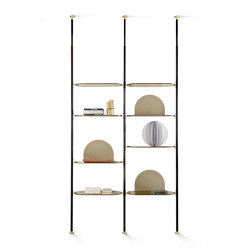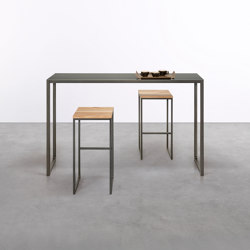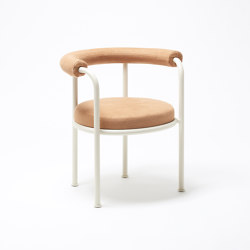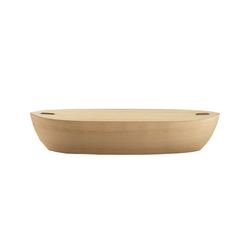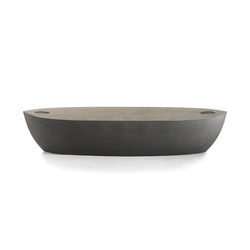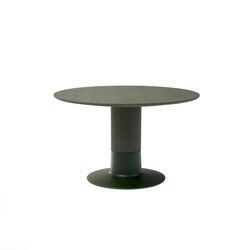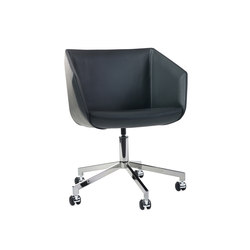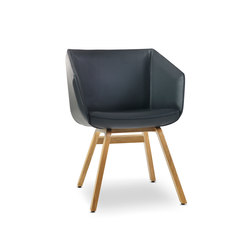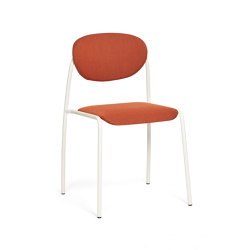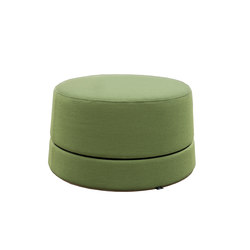Über Mattiazzi
MEHR üBER MATTIAZZI
In the 15 years since Mattiazzi developed its own brand, the company has become a reference point in furniture design.
Founded in 1979, the business built a reputation for exceptional woodwork as a third-party producer in the heart of the ‘chair triangle,’ an esteemed manufacturing hub in northern Friuli Venezia Giulia, Italy.
In 2009, Nevio Mattiazzi (co-founder of the company with his brother Fabiano) and Cristina Salvati, the global sales and marketing director, opted for a significant strategic shift, establishing their own design label. Embracing a tradition ingrained in Italian craftsmanship, they worked with a select team of renowned designers to develop an exceptional collection of chairs, employing a production process that seamlessly combined digital technology with an artisanal approach.
The application of cutting-edge technology was not just utilitarian but an exploration of its potential. The introduction of computer-numerical-control (CNC) machinery, exemplified by the legendary eight-axis robot, has allowed Mattiazzi to produce products with industrial precision while evolving traditional methods and techniques.
Today, the company is notable for transitioning from a manufacturer to a well-regarded international design brand with an inventive approach to furniture design and production. Its modest size and efficient decision-making processes allow it to navigate the global market while remaining agile and nurturing experimentation. What sets it apart, however, is the conception of the company as a creative venture rather than merely a commercial endeavour.
Mattiazzi remains one of the few furniture brands committed to in-house production. The company ethos centres on the exclusive use of natural materials. From meticulously sourcing timber from sustainably managed forests to using a chemical-free drying process, every step in the production process demonstrates a profound respect for the raw material, which is critical to more responsible, ethical design.
Among Mattiazzi’s most iconic creations are the Branca chair (2010) by Sam Hecht and Kim Colins, which melds high-tech robotics with artisanal craftsmanship; the Osso chair (2011) by Ronan and Erwan Bouroullec, sculpted through CNC milling; the Medici (2013), Clerici (2015), and Cugino (2019) collections by Konstantin Grcic, which marry new typologies with the allure of natural wood, and Jasper Morrison’s Zampa collection of quotidian chairs, armchairs and stools (2019).
Having strengthened its manufacturing capabilities, Mattiazzi developed a distinct brand identity free from the constraints of tradition. Instinctively, the company fostered collaborations with acclaimed art directors, recognising that the company’s transformation could only be realised with the power of design.
Mattiazzi thrives on close collaboration with designers, and the company’s ability to attract professionals interested in working in an environment that prioritises research and development is critical to its success. Recently, the design team welcomed Studio OE (Lisa Ertel and Anne-Sophie Oberkrome) and Marialaura Irvine, tasked with pioneering sustainable design solutions and radical approaches to raw and recycled materials. Driven by a fervent pursuit of innovation, Mattiazzi’s team remains steadfast in its commitment to resource efficiency and is united by a shared vision to confront the challenges of a changing world.
In the 15 years since Mattiazzi developed its own brand, the company has become a reference point in furniture design.
Founded in 1979, the business built a reputation for exceptional woodwork as a third-party producer in the heart of the ‘chair triangle,’ an esteemed manufacturing hub in northern Friuli Venezia Giulia, Italy.
In 2009, Nevio Mattiazzi (co-founder of the company with his brother Fabiano) and Cristina Salvati, the global sales and marketing director, opted for a significant strategic shift, establishing their own design label. Embracing a tradition ingrained in Italian craftsmanship, they worked with a select team of renowned designers to develop an exceptional collection of chairs, employing a production process that seamlessly combined digital technology with an artisanal approach.
The application of cutting-edge technology was not just utilitarian but an exploration of its potential. The introduction of computer-numerical-control (CNC) machinery, exemplified by the legendary eight-axis robot, has allowed Mattiazzi to produce products with industrial precision while evolving traditional methods and techniques.
Today, the company is notable for transitioning from a manufacturer to a well-regarded international design brand with an inventive approach to furniture design and production. Its modest size and efficient decision-making processes allow it to navigate the global market while remaining agile and nurturing experimentation. What sets it apart, however, is the conception of the company as a creative venture rather than merely a commercial endeavour.
Mattiazzi remains one of the few furniture brands committed to in-house production. The company ethos centres on the exclusive use of natural materials. From meticulously sourcing timber from sustainably managed forests to using a chemical-free drying process, every step in the production process demonstrates a profound respect for the raw material, which is critical to more responsible, ethical design.
Among Mattiazzi’s most iconic creations are the Branca chair (2010) by Sam Hecht and Kim Colins, which melds high-tech robotics with artisanal craftsmanship; the Osso chair (2011) by Ronan and Erwan Bouroullec, sculpted through CNC milling; the Medici (2013), Clerici (2015), and Cugino (2019) collections by Konstantin Grcic, which marry new typologies with the allure of natural wood, and Jasper Morrison’s Zampa collection of quotidian chairs, armchairs and stools (2019).
Having strengthened its manufacturing capabilities, Mattiazzi developed a distinct brand identity free from the constraints of tradition. Instinctively, the company fostered collaborations with acclaimed art directors, recognising that the company’s transformation could only be realised with the power of design.
Mattiazzi thrives on close collaboration with designers, and the company’s ability to attract professionals interested in working in an environment that prioritises research and development is critical to its success. Recently, the design team welcomed Studio OE (Lisa Ertel and Anne-Sophie Oberkrome) and Marialaura Irvine, tasked with pioneering sustainable design solutions and radical approaches to raw and recycled materials. Driven by a fervent pursuit of innovation, Mattiazzi’s team remains steadfast in its commitment to resource efficiency and is united by a shared vision to confront the challenges of a changing world.
MEHR üBER MATTIAZZI


